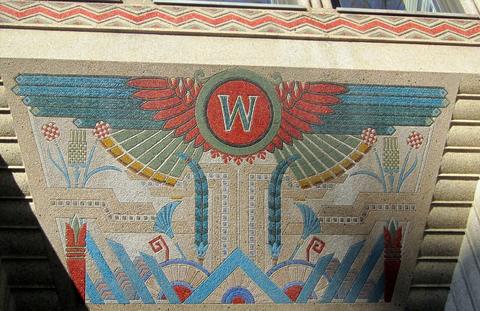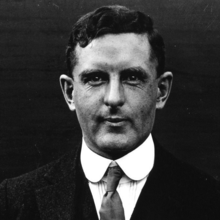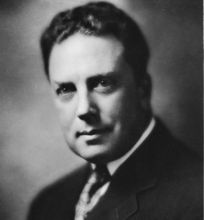The Men Who Made Concrete Beautiful

Earley’s concrete-mosaic entrance to the Walker Building on 15th St. NW in D.C.
There probably aren’t too many NIST researchers who can say that their physical science experiments started an artistic movement. But in the 1920s that is exactly what happened. In an unusual collaboration, an NBS scientist and a Washington, D.C., sculptor worked together to test the strength of concrete mixes, and in the process invented a new and much-revered artistic medium. They took a useful but aesthetically dull product, concrete, and created works that would be compared to some of the master artworks of the Renaissance.
This unusual story begins in an unexpected place: on top of a camel, caravanning through the Arabian Desert.
Joseph C. Pearson was tired. The 31-year-old scientist had spent much of his 20s traveling the world, Indiana Jones-style. He had sailed the seas in a small wooden ship and dogsledded to the far north of the Arctic. Now, as he urged his camel on through the dust storms of the Middle East, Pearson contemplated a quieter life. Thus in 1910 he left his globe- trotting job with the Carnegie Institution’s Department of Terrestrial Magnetism and accepted a position at the National Bureau of Standards (now called NIST).

His work at NBS eventually turned to the study of the properties of concrete.
Concrete is an ancient material, used since the Roman Empire. But even as late as the early 20th century, scientific under- standing of the material was limited. There were numerous recipes for making concrete, and not all of them were very good. The building industry turned to NBS for help.
For Pearson’s studies of various concrete mixes, he hired a local contractor, John Joseph Earley, to produce concrete test panels. Earley was not a typical builder. He was the son of a sculptor, and had learned that art as an apprentice under his father.

With these improvements in concrete, the NBS research project could have successfully ended right there. But instead, Pearson and Earley drew one more important conclusion, an insight that would change the course of Earley’s life, returning him to the world of fine art he had originally trained for.
Concrete is a popular building material because it is relatively inexpensive and strong. But concrete takes on the color of its cement component, a dull gray we all know from the inside of parking garages. Builders would usually cover over concrete with a layer of some other more aesthetically pleasing material. This adds to the cost of construction and often requires additional maintenance later on, when the less-durable covering material needs to be repaired or replaced. Pearson and Earley realized that with their new high- aggregate-ratio concrete, the color of the rocks in the aggregate could now dominate the color of the final product. Making raw concrete attractive would reduce the cost of construction and allow structures to be more durable with less maintenance.
Earley tested this idea when he won a contract to construct a neo-classical building and cascading fountain in Meridian Hill Park in Washington, D.C. He selected colored stones dredged from the Potomac River for his concrete, and instructed workers to use wire brushes to strip away the outer layer of cement covering the aggregate as the concrete cured. The final product was a colored and textured concrete that was highly praised, and quickly led to Earley being sought out for other projects. Some of his many works include the interior of the Shrine of the Scared Heart and the entrance to the National Zoo reptile house in D.C., the Bahá'í Temple in Wilmette, Ill., and the Poly- chrome Houses in Silver Spring, Md. He also did interiors in the White House and the Willard Hotel.
Art critic Ada Rainey, in a 1926 Washington Post review of Earley’s work, pro-claimed his concrete mosaics a “brilliant achievement,” “as rich in color possibilities as pigment to the brush of a painter.” She called his work “of great importance to the future of architecture and decorative arts,” and prophesied that “one can well conceive of a time when pilgrimages will be made to it as to a shrine of art.”
She was correct. In October 2014 the American Concrete Institute, holding its convention in D.C., arranged a daylong bus tour for its members to visit Earley sites around Washington. Most of Earley’s works are now revered as artistic land- marks. Meridian Hill Park and Earley’s Polychrome Houses in Silver Spring were designated historic landmarks in 1994 and 1996, respectively.
A biography of Earley, who died in 1945, called him “the man who made concrete beautiful.”
Joseph Pearson, the other man who made concrete beautiful, left NBS shortly after completing his work with Earley.
Originally published in NIST Connections: A Newsletter for NIST Employees and Associates, December 2014, p. 6–7.
Contacts
-
(301) 975-2789

